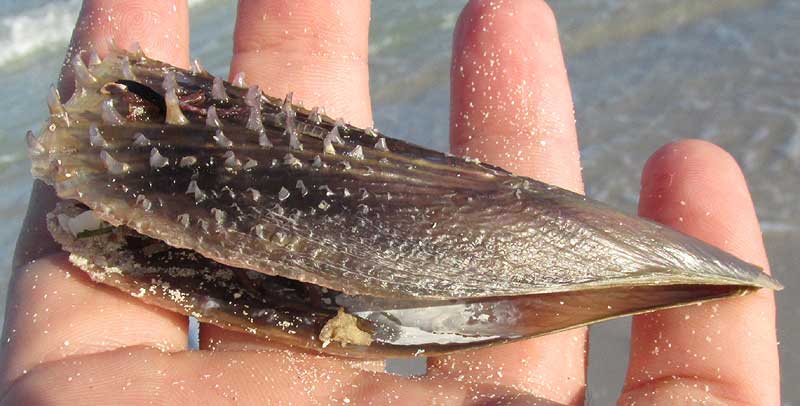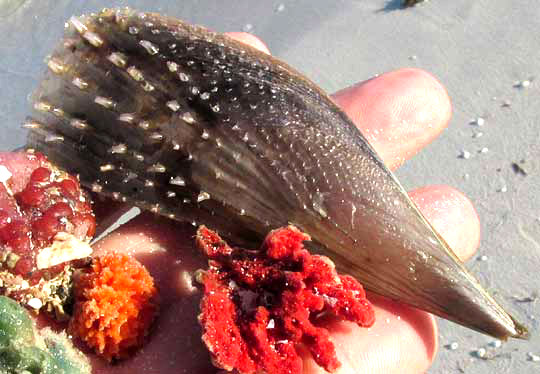Excerpts from Jim Conrad's
Naturalist Newsletter

from the December 7, 2014 Newsletter issued from Río Lagartos, on the Yucatan Peninsula's northern coast (~N21.60°, ~W88.16°), Yucatán state, MÉXICO
STIFF PEN SHELL
On the sandy, Gulf-side beach of the long, slender finger of land across the estuary from Río Lagartos, last week's norte -- a strong wind blowing for several days out of the north -- deposited lots of seaweed and seashells. Among the shells was the sharp-pointed one shown below:

A better look at the broad-based, tube-like spines on the broad end of the shell is seen at the top of this page.
Such long, sharp-pointed shells are known as pen shells, and the tube-like spines mostly occurring on the big end and only on one side, indicate that this is the Stiff Pen Shell, ATRINA RIGIDA. Stiff Pen Shells turn up on beaches from North Carolina south through the Gulf of Mexico and Caribbean to Brazil.
The bivalve mollusks producing pen shells burrow their sharp ends into soft mud, leaving their broad end pointing upward into the water. The animal within the shell filters food from water circulating through the open shell's upper end. At the narrow burrowing end, a cluster of long, fine, silky threads known as "byssal threads" is introduced into the mud, to anchor the shell in place. The threads are covered with an adhesive that holds up remarkably well in water, and does a good job rooting the shell in place. The Stiff Pen Shell species is noted for its ability to heal breaks and holes in its shell. Also, black pearls may be produced by the species. These unusual features have made the Stiff Pen Shell the subject of several scientific studies.
Often a kind of small crab lives within the shell, eating food missed by the feeding clam. Barnacles and other crustaceans may attach themselves to the Stiff Pen Shell's outer shell. Starfish and certain gastropods prey on them.
And some Mexican humans prey on them, too, the large muscle holding the two shell halves together being considered worth the trouble of gouging it out.